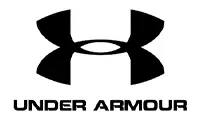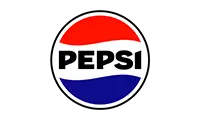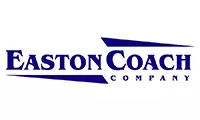Practical
Lehigh Sports Medicine
Making it Practical
NUTRITIONAL GUIDELINES
The following guidelines will assist you in better nutrition:
· Eat more times per day.
· Be consistent with meal times and keep plenty variety in food selection.
· Broil, bake, or grill all meats.
· Eat more chicken (without skin) and fish.
· Eat lean cuts of meat only (or trim the fat).
· Consume low-fat dairy products.
· Consume low glycemic fruit choices 2-3 servings per day. See: http://www.glycemicindex.com/
· Eat raw steamed or boiled vegetables daily. See: http://www.allrecipes.com/advice
· Regulate the amount of butter, mayonnaise and condiments high in saturated fat.
· Regulate the amount of red meat consumption.
· Drink appropriate amount of water daily.
· Use sweets sparingly, not as a meal.
· Avoid processed foods whenever possible i.e. Cold cuts, chips, pre-packaged meals, add more.
Some high carbohydrate foods:
· Breads and rolls
· Cereals (good quality, no sugar added)
· Pancakes and waffles (diet butter)
· French toast
· Pasta
· Rice (brown rice is preferable)
· Vegetables (potatoes, sweet potatoes, lima beans, peas, corn, etc.)
· Fruit and fruit juices
· Jellies and jams
By consuming more of the foods listed above, you can:
· Increase energy storage in the muscle.
· Increase protein sparing effect, therefore the protein will not be used for energy, but rather growth and repair.
· Increase in endurance.
· Increase rate of recovery from a practice session.
Low Fat Substitutes List
Fats are very important to your diet regardless of your goals. But, be sure your getting the right type of fat. Your total fat intake should consist of less than 20% saturated fats.
Decrease your saturated fats:
| Choose more: | Choose less: |
| Skinless chicken | Fried chicken |
| Baked ham | Salami and Bologna |
| Mustard | Mayonnaise |
| Mozzarella cheese | American cheese |
| Skim or 1% milk | Whole milk |
| Pretzels | |
| Sweet potato |
Pre Competition Nutrition
Pre-competition meals are a vital part of an athlete’s training program. It is recommended that the meal consist of appropriate level of GI carbohydrate foods, small amount fat and protein for balance. Carbohydrates can be converted quickly to glycogen and used by the muscles. Fats and protein, on the other hand, usually slow intestinal motility and can take hours to digest. Fat does not provide a rapidly usable source of energy and high levels in the bloodstream can reduce carbohydrate uptake into the muscles.
The pre-game meal should be approximately 2-4 hours prior to competition to allow adequate digestion.
See: New Food Guide
See: Low and Moderate Glycemic Index
Post Competition Nutrition
CARBOHYDRATES
What you eat and drink after practice/competition CAN affect your recovery rate. This is the case with daily training, one intense competition, or multiple events in one day. Post-exercise food and drink selections should be chosen as carefully as your pre-exercise foods. Exercise depletes muscle glycogen, therefore, it is important to consume high carbohydrate foods afterwards. Resynthesis of muscle glycogen will be facilitated to help you recover from the previous exercise session and prepare you for the next exercise session. Long term muscle glycogen depletion may result in fatigue and/or headaches and a decrease in performance level. Fluid replacement is also critical to proper recovery. High carbohydrate foods and beverages should be consumed 1 to 4 hours after exercise. The appropriate intake of carbohydrate is .5 grams/ pound of body weight within the first two hours and then repeat this amount two hours later.
Example: 150 pound athlete: 150 lb. x .5g Carbos/lb = 75 g carbohydrates
1 g carbohydrate contains 4 calories
4 calories/ g x 75 g Carbos= 300 calories
Therefore, the 150 lb. athlete would need to consume 75 grams, or 300 calories, of carbohydrates within the first two hours and again in the second two hours. Examples of foods that you can acquire 300 calories are:
· 1 cup of orange juice and a bagel
· 2 cups of cranberry juice
· 8 oz. fruit yogurt
· 1 bowl of cereal (healthy) with a banana
Examples of recovery foods:
See: High Glycemic Index
| Pizza | Vegetable soup | Vegetables |
| Potato | Yogurt | Rice |
| Banana | Orange Juice | Bread |
| Pineapple Juice | Raisins | Saltines |
| Pretzels |
Fist Method for Portions
The fist method for measuring portion sizes for CHO and Protein:
One fist of meat or about 4-6 oz equals about 20-25 grams of protein (i.e. chicken, beef, fish, lunch meat (3 slices))
One fist of CHO equals about 40-50 grams of CHO (i.e. bagel, cup of pasta/rice, cereal)
This method is not exact but will allow you to “make it practical” when calculating your sport specific macronutrients.
Calorie values of foods: www.nal.usda.gov/fnic/foodcomp
Eating on the Run: Make the Best Choice
| Bad | Better | Best | |
| Burger King |
Double whopper with cheese and mayo 1,010 calories 67 grams of fat |
Whopper Junior sandwich without mayo 320 calories 15 grams of fat |
Broiler chicken sandwich without mayo 370 calories 9 grams of fat |
| McDonalds |
Big Extra with cheese 810 calories 55 grams of fat |
6- piece chicken McNugget 290 calories 17 grams of fat |
Chicken McGrill without mayo 340 calories 7 grams of fat |
| Wendy’s |
Big bacon classic burge 580 calories 30 grams of fat |
Plain single burger 360 calories 16 grams of fat |
Grilled chicken without mayo 310 calories 8 grams of fat |
| Taco Bell |
Taco salad in edible shell 850 calories 52 grams of fat |
Burrito chicken supreme 430 calories 18 grams of fat |
Grilled chicken burrito 390 calories 13 grams of fat |
See: www.cooknurse.com/dieting_ff.htm
Preventing Jet Lag
Jet lag is a space-age annoyance that most of us grin and bear. What exactly is jet lag? From our molecular structure on upward, our bodies are composed of thousands of systems, each with its own cyclical rhythm. Temperature, heart rate, perspiration, blood and urine composition, digestion, elimination, metabolism-each system has its own inherent tide-like ebb and flow, peaking sometime during the day, slowing down at night, in approximately 24-hour cycles. Disturb those systems by adding or subtracting hours to our metabolic time clocks and we suffer "jet lag". Some suggestions to lessen the effects of jet lag are (1) Eat cautiously before and during a flight. Avoid heavy foods that are hard to digest (meats and fats for example) and gassy foods (cabbage, beans, onions). Pass up rich and exotic dishes. (2) Eat only if you are hungry. Pay attention to your body clock. The airlines serve meals at hours convenient to their busy flight schedules. (3) Consume extra liquids. The dry air in plane cabins dehydrates people quickly. Even though you are not thirsty, drink a couple glasses of juice or water during a flight. (4) Exercise before a trip, if possible. A workout reduces tension and a relaxed body more easily combats the debilitating effects of jet lag.









